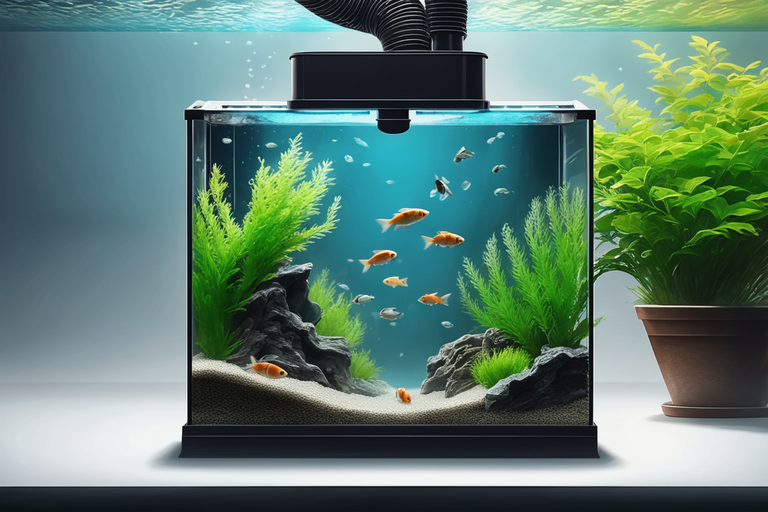The Essential Role of Biological Filtration in Your Aquarium
Are you struggling to keep the water clean and the fish healthy?
You may not realize it, but unlocking the power of biological filtration could be the answer!
In this article, we’ll explore how biological filtration can make all the difference in your aquarium.
From understanding the nitrogen cycle to selecting the right filter media.
So get ready to discover the power of biological filtration and take your aquarium to the next level.
Key Takeaways
- Biological filtration is a crucial component of aquarium filtration systems, along with mechanical and chemical filtration.
- The use of beneficial bacteria in biological filtration helps convert harmful substances like ammonia and nitrites into less harmful compounds.
- Cycling the tank is necessary to establish a colony of beneficial bacteria in the bio media and efficiently filter out ammonia and nitrites.
- Proper care and maintenance of the bio media, such as rinsing it in tank water and replacing it when it becomes ineffective, is important for maintaining effective biological filtration.
The Essential Role of Biological Filtration in Your Aquarium
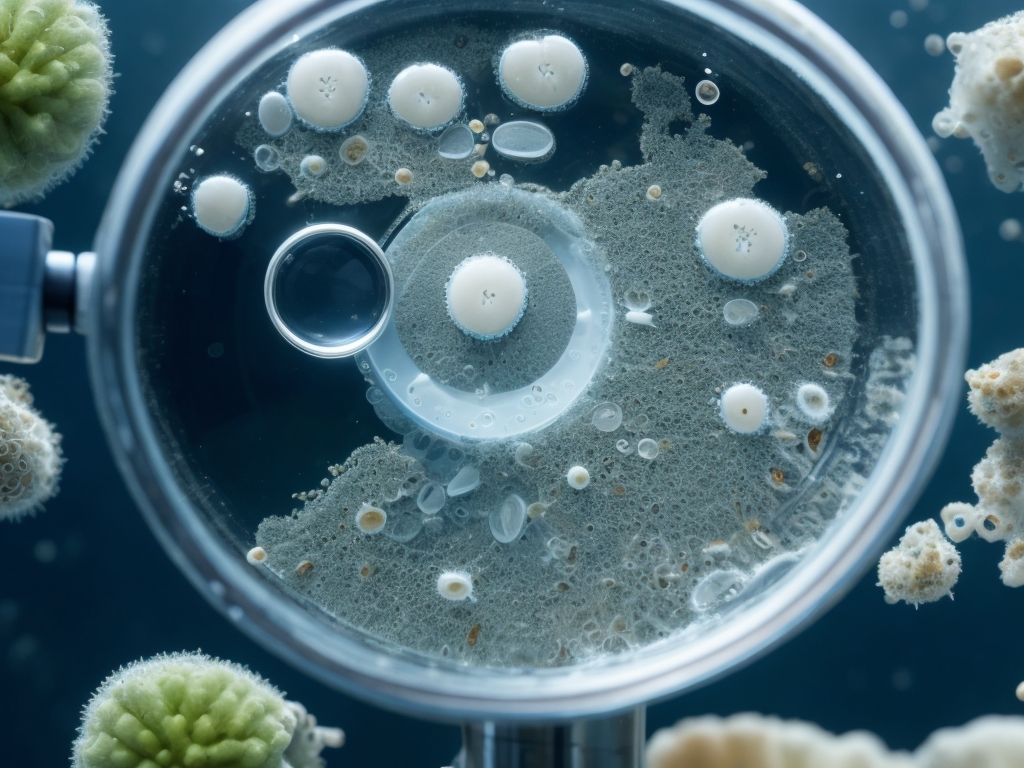
You’re likely already aware of the importance of filtration in your aquarium, but you may not be as familiar with the specific role that biological filtration plays in keeping your tank clean and healthy. Biological filtration is one of three types of filtration used in aquariums, the other two being mechanical and chemical filtration.
It involves the use of beneficial bacteria to break down harmful substances, such as ammonia and nitrites, into less toxic compounds. Nitrifying bacteria require oxygen, while denitrifying bacteria thrive in areas without oxygen. The nitrogen cycle is essential for biological filtration, as it allows the beneficial bacteria to establish a colony and efficiently filter out ammonia and nitrites.
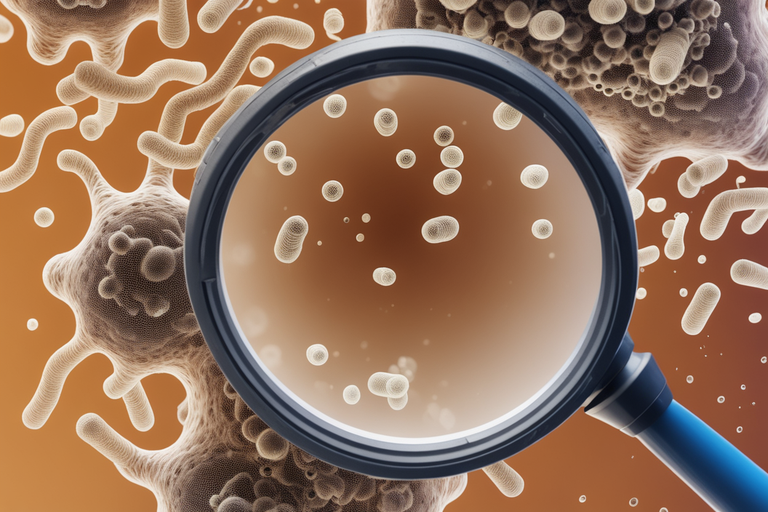
Filter media, like sponges and ceramic rings, provide an ideal surface area for bacteria to colonize. In addition to bacteria, water flow and regular water changes are also important for supporting biological filtration.
Incorporating all three types of filtration, biological, mechanical, and chemical, will help maintain a healthy aquarium environment and reduce the need for frequent water changes.
Why Aquariums Need Filtration

With one type of filtration, biological, already discussed, it’s time to look at why aquariums need filtration in the first place. Aquariums, whether for a home, freshwater, or saltwater, need filtration systems to keep the water clean and healthy for the fish.
Filtration helps to remove toxins such as ammonia, nitrate, and nitrite, which can be hazardous to fish. Filtration systems also help to maintain a stable water chemistry, which is essential for the health of the fish.
There are three main types of filtration: mechanical, chemical, and biological. Mechanical filtration removes debris and particles from the water. Chemical filtration is used to remove toxins and impurities. Biological filtration uses living organisms, such as beneficial bacteria, to eliminate harmful substances from the water.
Using all three types of filtration provides the best water quality and enhances the health of the fish. Regular maintenance of all filtration components is essential to ensure their effectiveness.
Biological filtration promotes a healthy aquarium environment, breaks down harmful substances, helps maintain stable water parameters, reduces the need for frequent water changes, and supports the growth of beneficial bacteria.
Types of Aquarium Filtration
When it comes to aquarium filtration, you’ll want to know about two types: biological filtration and mechanical filtration.
Biological filtration uses living organisms to filter out harmful substances, while mechanical filtration removes debris and particles from the water.
Both provide important benefits for a healthy aquarium environment.
Biological filtration
Biological filtration is an essential part of maintaining a healthy aquarium environment. It involves using living organisms, specifically bacteria, to break down and remove harmful substances from the water. It works in conjunction with mechanical and chemical filtration to promote a healthy aquarium.
Its uses include:
- Breaking down ammonia and nitrite
- Removing nitrates
- Maintaining stable water parameters
- Reducing the need for frequent water changes
- Supporting the growth of beneficial bacteria
Biological filtration is necessary for aquariums with fish waste and can be found in many types of filters such as mechanical, canister, and aquarium water filters. Filter media specifically designed for this type of filtration, such as ceramic rings or balls, can provide the best results. Proper care for bio media, such as rinsing it in tank water and avoiding chemicals and detergents, is also important.
Cycling is the process of establishing beneficial bacteria in the bio media and testing water parameters during this is crucial.
Mechanical filtration
Using mechanical filtration in aquariums is a great way to keep the water clean and healthy. Mechanical filters work by trapping debris and particles in a media filter, which is then removed from the water. Mechanical filtration is one of the three types of filtration systems used in aquariums, along with biological and chemical filtration. A mechanical pre-filter is often used to prevent waste from clogging the media in the filter, and it can remove larger particles from the water.
Media filters, like sponges, trap particles and help to remove them from the water. This type of filter is used in combination with other types of filtration, such as biological and chemical, to create a balanced environment. Mechanical filtration is an important part of keeping an aquarium clean and healthy, and regular maintenance of the filter is essential to ensure its effectiveness.
| Mechanical Filter | Mechanical Filtration |
|---|---|
| Mechanical Pre-Filter | Filter Can Remove |
| Mechanical Aquarium | Particles from the Water |
| Media Filter | Media in the Filter |
| Types of Filtration Systems | Types of Aquarium |
Understanding the Aquarium Nitrogen Cycle
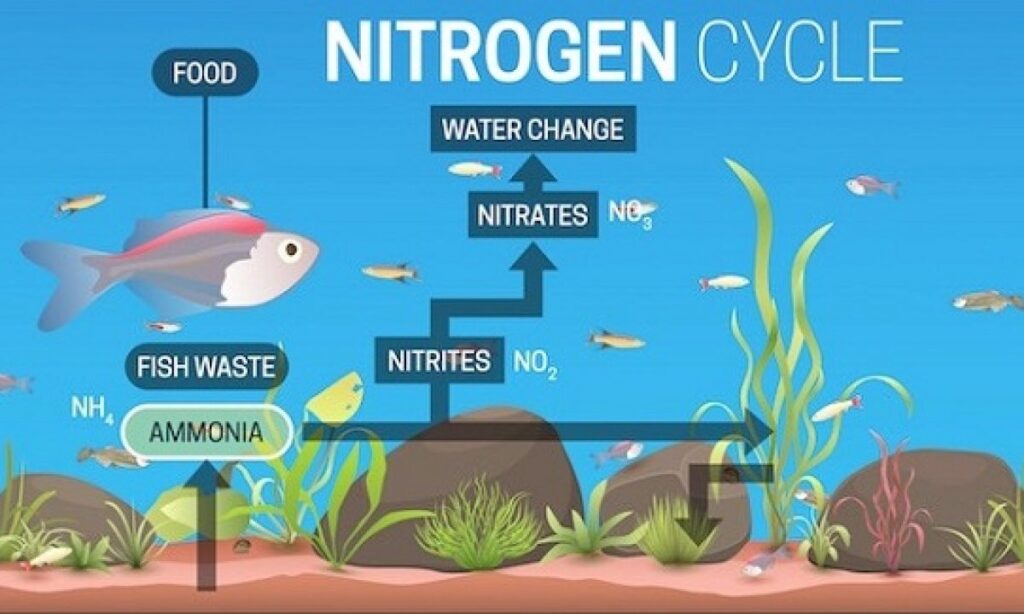
Understanding the aquarium nitrogen cycle starts with getting to know the different steps involved.
The nitrogen cycle involves the conversion of ammonia to nitrite, and then nitrate. In a biological filter, nitrifying bacteria convert ammonia and nitrite into less harmful compounds.
This process is aided by a sponge, mechanical filter media, chemical filter media, and live plants. In a freshwater aquarium, nitrifying bacteria are essential to the nitrogen cycle and are supported by power filters, canister filters, and hang-on-back filters.
Biological filtration is the most effective type of filtration for removing ammonia and nitrite, as it promotes the growth of beneficial bacteria.
In addition to nitrifying bacteria, denitrifying bacteria can also be used to remove nitrates. Denitrifying bacteria require oxygen-free conditions, so filter media like volcanic rock and ceramic noodles can be used to maintain these conditions.
Biological filtration works in tandem with mechanical and chemical filtration to provide the best water quality and maintain a healthy aquarium environment.
Key Components of Biological Filtration
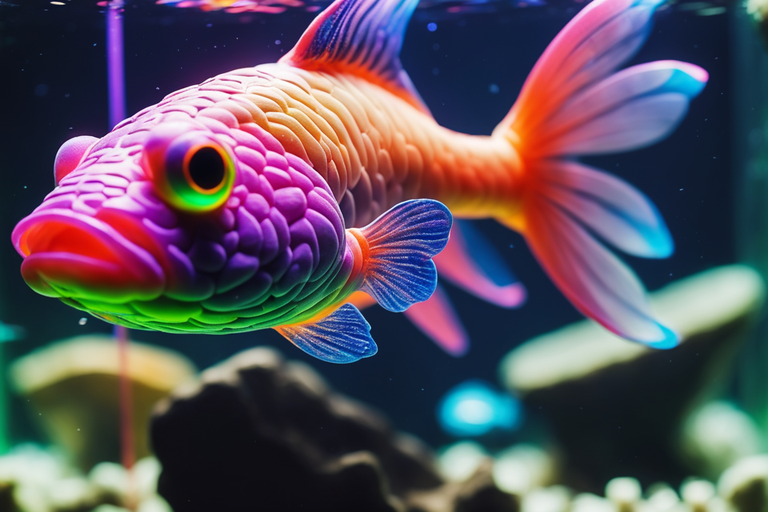
Having a proper filtration system for your aquarium is essential for a healthy environment. Biological filtration is a key component of this process, and requires beneficial bacteria to clean the water.
To get the best results, you need to know the different types of filter media to provide a home for these bacteria.
Biological filter media
Choosing the right biological filter media for your aquarium can help ensure healthy water and a thriving environment. Filter media can be used to house beneficial bacteria, providing them with the necessary surface area to grow and thrive. Different types of filter media are best suited for different types of filters, such as gravel filters, undergravel filters, or even canister filters.
In an established aquarium, partial water changes will help keep the water clean and support the biological filtration process. Biological filtration works in conjunction with mechanical and chemical filtration, which must also be maintained to ensure the best water quality.
Filter media can also help to prevent alga growth, which can cause problems in the aquarium. To get the most out of your biological filtration system, make sure to choose the right filter media for your fish tank.
Beneficial bacteria
Beneficial bacteria are the key components of biological filtration, and they play an essential role in establishing a healthy aquarium environment. When setting up a new aquarium, it’s important to cycle the tank to allow the beneficial bacteria to establish a colony and efficiently filter out ammonia and nitrite. In saltwater tanks, nitrifying bacteria convert ammonia into nitrite, and then nitrite into nitrate, which is less harmful. In freshwater tanks, these bacteria are important for maintaining good water quality.
Chemical filtration is also needed to keep the water clear, but biological filtration helps to maintain the tank’s water chemistry. In addition, biological filtration is used in conjunction with mechanical and chemical filtration to ensure that the water is clear and safe for fish. With all three types of filtration, the aquarium will be able to maintain healthy water parameters and provide a safe and healthy environment for fish.
Dive into Different Types of Filter Media
Are you curious about the different types of filter media used in aquarium biological filtration?
Let’s explore the surface area requirements of nitrifying and denitrifying bacteria, as well as the benefits of ceramic rings, ceramic balls, and moving bed filter media.
Understanding Filter Media
There are many types of filter media available to support biological filtration in aquariums. This type of biological filtration uses beneficial bacteria to remove toxins and other harmful substances from the water. Filter media is used to provide a surface for the bacteria to colonize and thrive on.
Filter media can include activated carbon, ceramic rings, ceramic balls, volcanic rock, bio balls, and moving bed filters. Each of these media provides a different surface area for the bacteria and works in conjunction with mechanical and chemical filtration to promote a healthy aquarium environment.
Activated carbon is used to remove toxins from the water, while ceramic rings and balls provide ample surface area for the bacteria to colonize. Volcanic rock, bio balls, and moving bed filters are used to house denitrifying bacteria.
Using all three types of filtration, in combination with the right filter media, provides the best water quality.
Ceramic Balls
Another type of filter media that can be used for biological filtration is ceramic balls, like MarinePure, which provide a larger surface area for beneficial bacteria to colonize. These ceramic balls are popular in aquarium filters, as they offer both mechanical and biological filtration. They’re designed to filter out particles and wastes from the water, making them a great choice for aquarium hobbyists who want to maintain a healthy and stable environment for their aquarium inhabitants.
When choosing a filter, it’s important to consider the type of filter media that will best suit the needs of the aquarium. Ceramic balls are a great choice for biological filtration, as they provide more surface area than ceramic rings and are effective at removing pollutants from the water. Additionally, they’re readily available in most aquarium products and can be easily maintained.
Bio Balls
You may have heard of bio balls as a type of filter media for biological filtration. It’s a type of biological filtration that uses activated carbon to remove toxins and impurities from the water in the aquarium. Bio balls are placed inside the aquarium and provide a great option for biological filtration.

All aquariums need filtration to keep the water clean and healthy for fish, and biological filtration is the process of removing harmful substances using living organisms, such as bacteria. There are many types of aquarium filters available, but biological filtration refers to the use of living organisms to filter out toxins and other harmful compounds.
Bio balls provide a great surface area for beneficial bacteria to colonize and help to maintain a healthy and stable environment in the aquarium. They’re an effective way to support biological filtration and are an excellent addition to any aquarium.
Ceramic Rings
Ceramic rings are highly valued in aquariums for their porosity and extensive surface area, ideal for hosting beneficial bacteria crucial for the nitrogen cycle. Constructed from heat-baked ceramic compounds, these rings feature numerous tiny holes perfect for bacterial colonization, facilitating the conversion of harmful ammonia into safer nitrates. Their robustness is notable, offering remarkable durability and longevity, needing only minimal maintenance to prevent debris accumulation that could block the pores and impede bacterial function.
Typically positioned in the middle or final chamber of the filter, ceramic rings perform optimally when larger debris has already been filtered out, preventing clogging. Maintenance requires gentle cleaning with water from the tank itself to preserve the vital bacteria colonies. These rings are versatile, suitable for various aquarium types, including freshwater, saltwater, or reef setups. However, they demand patience during the initial use in new aquariums, as the colonization of bacteria essential for a stable biological filtration system takes time. This process, known as cycling, is vital for maintaining a healthy aquatic environment for all tank inhabitants.
Lava rock
Lava rock, formed from cooled volcanic magma, is popular in aquariums due to its porous nature, providing ample space for beneficial bacteria crucial for the nitrogen cycle. These bacteria help convert harmful ammonia from fish waste into less dangerous nitrates. However, the rock’s rough, crevice-rich surface makes cleaning challenging, as debris gets trapped easily. Care must be taken to clean effectively without disturbing the bacteria colonies, balancing cleanliness with maintaining a healthy biological environment. Despite the cleaning challenges, its effectiveness in biofiltration and aesthetic appeal make it a favorite among aquarists.
Sponges
Sponges in aquariums offer dual functionality: they act as mechanical filters by trapping debris, and as biological filters by hosting beneficial bacteria vital for the nitrogen cycle. Their porous nature captures particulates while providing an environment for bacteria that convert harmful toxins like ammonia into less harmful substances. Available in various pore sizes, sponges cater to different bacterial species’ needs. Regular, gentle cleaning is necessary to prevent clogging and preserve bacterial colonies, balancing mechanical efficiency with biological health in the aquarium’s ecosystem.
Types of Biological Filters for Your Aquarium
When it comes to biological filtration, there are several types of filters you can use in your aquarium. These include:
- Sponge filters
- Canister filters
- Power filters
- Gravel filters
Each filter has its own unique benefits and can help you create a healthy and stable environment for your aquatic creatures.
Sponge filters
Your aquarium’s biological filtration can be enhanced with the addition of sponge filters. Sponge filters are specialized filters that use sponges to move water and remove debris from an aquarium. They’re a type of chemical filtration, as they work by trapping small particles, like fish waste, in the sponge material.
The sponge filters are placed inside an aquarium or connected to another aquarium, allowing water to flow through the filter and be filtered as it passes. They’re ideal for biological filtration, as the sponges provide a large surface area for beneficial bacteria to colonize. This type of filtration like nitrifying bacteria, helps to promote a healthy aquarium environment and provides the necessary filtration for fish and other animals.
Filtration provides clean water, stability, and a healthy environment for fish and other aquatic species.
Canister filters
Canister filters are a type of biological filtration that can be used in aquariums to provide clean and healthy water for fish and other aquatic species. Aquarium filters are generally composed of three main types of filtration, mechanical, chemical, and biological. A canister filter is the third type of filtration, and is an excellent choice for larger aquariums due to its increased capacity for both mechanical and biological filtration.
| Type | Pros | Cons | |
|---|---|---|---|
| Canister | High Capacity | Costly | |
| Sponge | Inexpensive | Low Capacity | |
| Hang On | Easy to Maintain | Less Capacity |
Canister filters are typically an external filter, meaning they are installed outside the aquarium via an inlet and an outlet tube. They are typically filled with filter media like ceramic rings or bio-balls which house beneficial bacteria. This type of filter is one of the best ways to provide good water quality for large aquariums, as the increased capacity and surface area of the media allow for a larger colony of bacteria to grow. This is the key to good water quality, as the bacteria help to break down harmful substances like ammonia and nitrite. Canister filters may be expensive, but they are a great option for larger aquariums.
Power filters
Carrying on from the discussion of canister filters, power filters are another type of biological filtration that can provide clean and healthy water for your aquarium. They are:
- Versatile and easy to use
- More affordable than canister filters
- Require less maintenance
- Suitable for both freshwater and saltwater tanks
- Filter out debris, toxins, and other impurities from the water
Gravel filters
Although not as popular as canister or power filters, gravel filters are still an effective type of biological filtration for aquariums. Gravel filters act as a mechanical filter, removing particles from water and providing a surface area to house nitrifying bacteria. This type of filter is easy to set up and maintain and is suitable for smaller tanks.
| Feature | Pros | Cons |
|---|---|---|
| Cost | Inexpensive | Regular maintenance |
| Setup | Easy to install | Lack of mechanical filtration |
| Filter | Provides surface area for nitrifying bacteria | Not suitable for larger tanks |
| Ideal for smaller tanks |
Gravel filters provide an effective biological filtration system, although they are not as efficient as other types of filters. Regular maintenance is required to ensure the filter is working correctly, and it is important to replace the gravel every few months to prevent the build-up of toxins. Gravel filters may not be suitable for larger tanks, and additional mechanical filtration may be required.
How to Maintain Your Aquarium Filter for Optimal Performance
To maintain your aquarium filter for optimal performance, regular maintenance is key. Adhering to a regular maintenance routine, troubleshooting common issues, and ensuring the health of your aquarium’s inhabitants through proper filtration are all important steps. Here are five must-do tips for maintaining the best aquarium filtration:
- Clean filter media regularly, removing any debris that has built up.
- Check water parameters regularly, as poor water quality can be a sign of filter failure.
- Replace filter media when it’s no longer effective.
- Inspect filter parts for signs of wear and tear, and repair or replace any broken parts.
- Monitor biological filtration for optimal efficiency, replacing any filter media that has become clogged or ineffective.
Conclusion
Regularly maintaining your aquarium filter is essential for optimal performance, and biological filtration plays a critical role in providing a healthy environment for your fish and other aquatic life. By converting ammonia and nitrite into less harmful compounds, nitrifying bacteria keep water safe and stable. Denitrifying bacteria remove nitrates, and both require a certain type of filter media to thrive. Cycling the tank is necessary to establish these beneficial bacteria and can take several weeks to complete. Additionally, mechanical and chemical filtration are just as important and should be implemented alongside biological filtration.
| Benefits of Biological Filtration | Proper Care for Bio Media |
|---|---|
| Promotes a healthy aquarium environment | Rinse bio media only in tank water, not tap water |
| Breaks down harmful substances such as ammonia and nitrites | Avoid using chemicals or detergents to clean bio media |
| Helps maintain stable water parameters | Handle bio media gently to prevent damage |
| Reduces the need for frequent water changes | Monitor bio media regularly for signs of deterioration |
| Supports the growth of beneficial bacteria | Replace bio media when it becomes ineffective |

